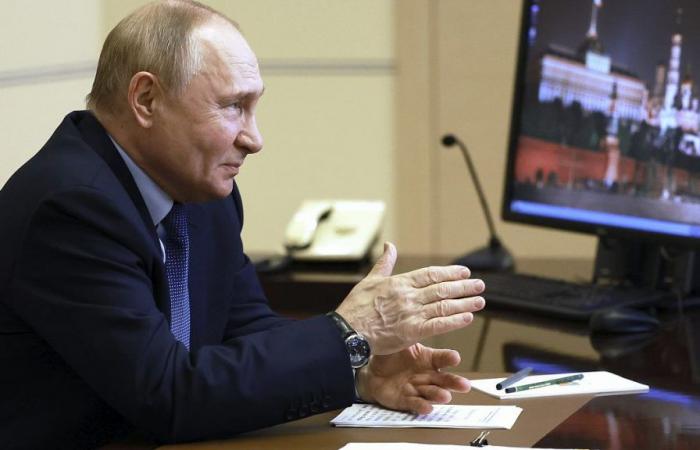At the United Nations Security Council on Friday, a representative of Conflict Armament Research said his organization had detailed the components of the missiles used against Ukraine and that evidence showed they came from North Korea.
Russian President Vladimir Putin has suggested resuming production of intermediate-range missiles that were banned under a now-defunct treaty with the United States.
The Intermediate-Range Nuclear Forces (INF) Treaty prohibited the use of nuclear and conventional ground-based missiles with a range between 500 and 5,500 kilometers.
It was considered a benchmark for arms control when Soviet leader Mikhail Gorbachev and US President Ronald Reagan signed it in 1988.
But the United States withdrew from the pact in 2019, citing violations by Russia.
“We need to start production of these strike systems and then, based on the real situation, make decisions on where to place them, if necessary to ensure our security”Vladimir Putin said at a meeting of the Russian National Security Council.
The Kremlin chief said Russia had not produced such missiles since the treaty was scrapped in 2019, but that “it is now known that the United States not only produces these missile systems, but has already brought them to Europe for exercises, in Denmark. Most recently, it was announced that they are in the Phillippines”.
Since withdrawing from the treaty, the U.S. military has made progress in developing a ground-launched medium-range conventional missile capability, called Typhoon, that would have been banned under the INF Treaty.
The Typhoon is capable of firing two missiles (the Tomahawk Land Attack Missile and the Standard Missile 6). The military tested the system during an exercise in the Philippines last spring.
The last remaining arms control treaty between Washington and Moscow is the new Strategic Arms Reduction Treaty, which limits the number of deployed nuclear warheads to 1,550 and the number of missiles and bombers deployed by each country to 700 . It is due to expire in 2026 and the lack of dialogue on the anchoring of a new agreement worries arms control defenders.
Vladimir Putin’s statement came on the same day that North Korea’s arms transfers to Russia were the subject of a session of the United Nations Security Council.
Jonah Leff, a representative for Conflict Armament Research (CAR), said his organization detailed the components of the missiles used against Ukraine and that evidence showed they came from North Korea.
“The above-mentioned evidence that my organization observed and documented first-hand irrefutably establishes that the missile fired at Kharkiv was indeed of North Korean origin. During a subsequent visit during which I myself traveled with a team in Ukraine for further documentation, we observed other conventional weapons manufactured by the DPRK We observed other conventional weapons manufactured by the DPRK that had been seized on the front lines and had no. never been observed on the battlefield in Ukraine”did he declare.
However, United Nations Security Council resolutions prohibit the transfer of weapons to Russia.
“In recent months, allegations have also been made of the transfer of ballistic missiles and munitions from North Korea to the Russian Federation, in violation of relevant Security Council resolutions”said Izumi Nakamitsu, the high representative for disarmament affairs.






